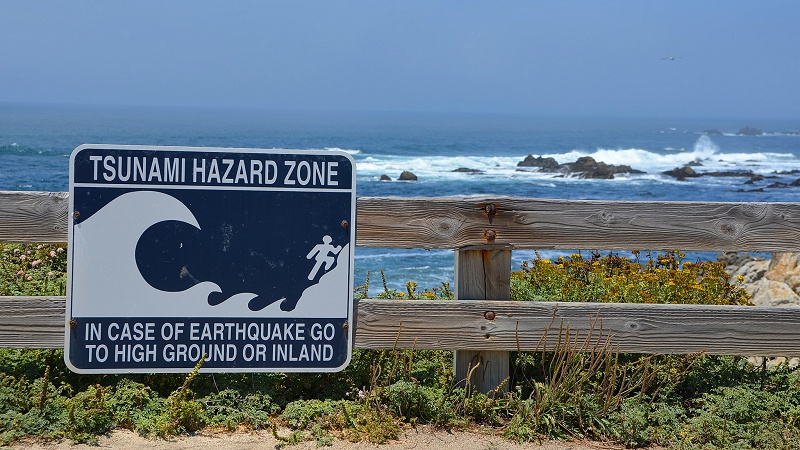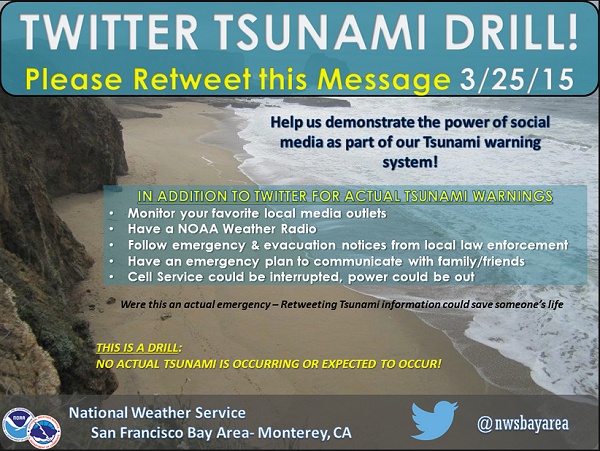
This week, March 22 – 28, is Tsunami Preparedness Week, a concerted national effort to bring together everyone—from emergency responders to the general public—to prepare for tsunamis, the seismic sea waves which can threaten our Bay Area beaches and coastlines around the world.
The great earthquake tsunamis in Sumatra (2004) and Japan (2011) awakened an awareness of tsunamis that had faded in this country since the great Alaska earthquake of 1964. It has been heartening to watch this program spread through internet campaigns and social media.
The basic message for beach goers is as simple as it gets:
- Tsunamis can happen at any time.
- Watch the sea for sudden changes.
- Listen for sirens.
If one of these happens, get away from the water and stay away. Follow the signs to shelter. If you feel a long, strong earthquake, do the same. Big quakes, sudden sea changes, sirens—one of those three is enough. Don’t wait for the others, just get to safe ground.
Longtime locals know about tsunamis. So do science geeks like you and me. But we need to maintain, cultivate and spread that knowledge. Bring it up every now and then with neighbors, friends, coworkers and acquaintances. If you have house guests from out of the area, assign them some advance reading. If you’re traveling to other shores, assign yourself the same research—and share it with those you meet. This is what people in hurricane country, tornado country and blizzard country do.
